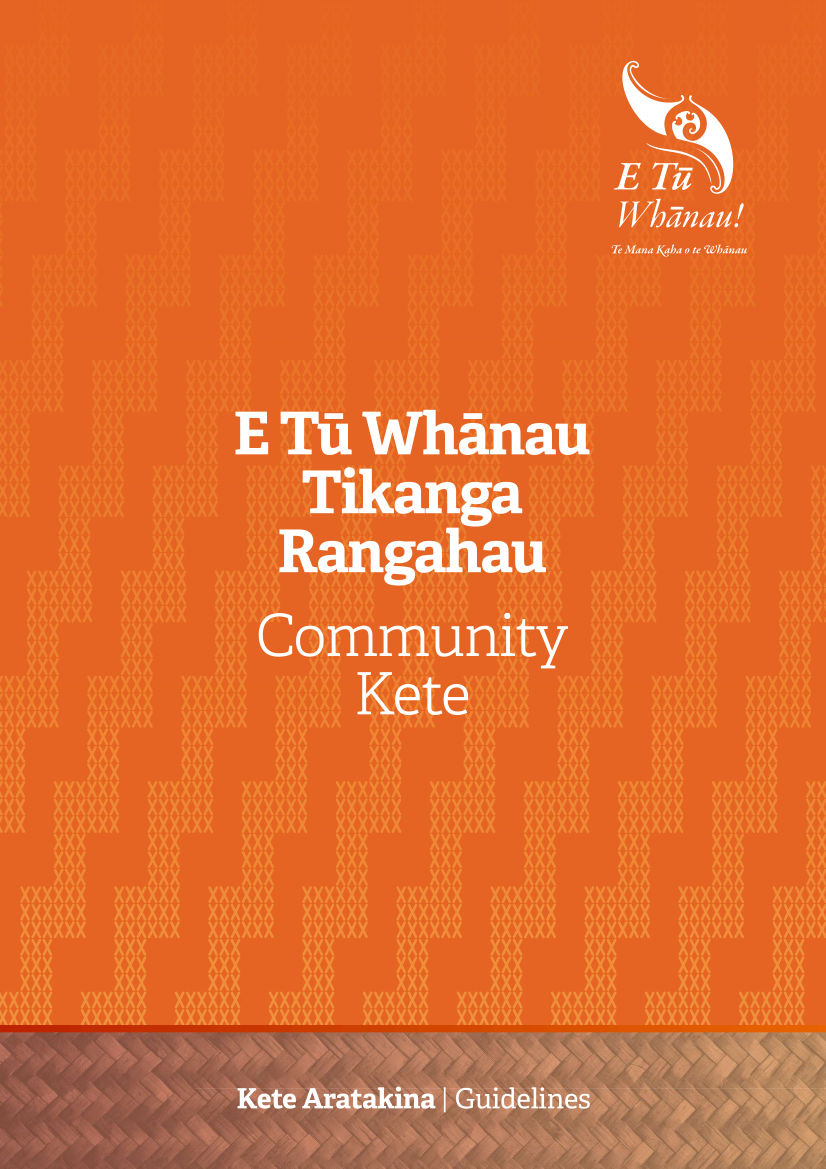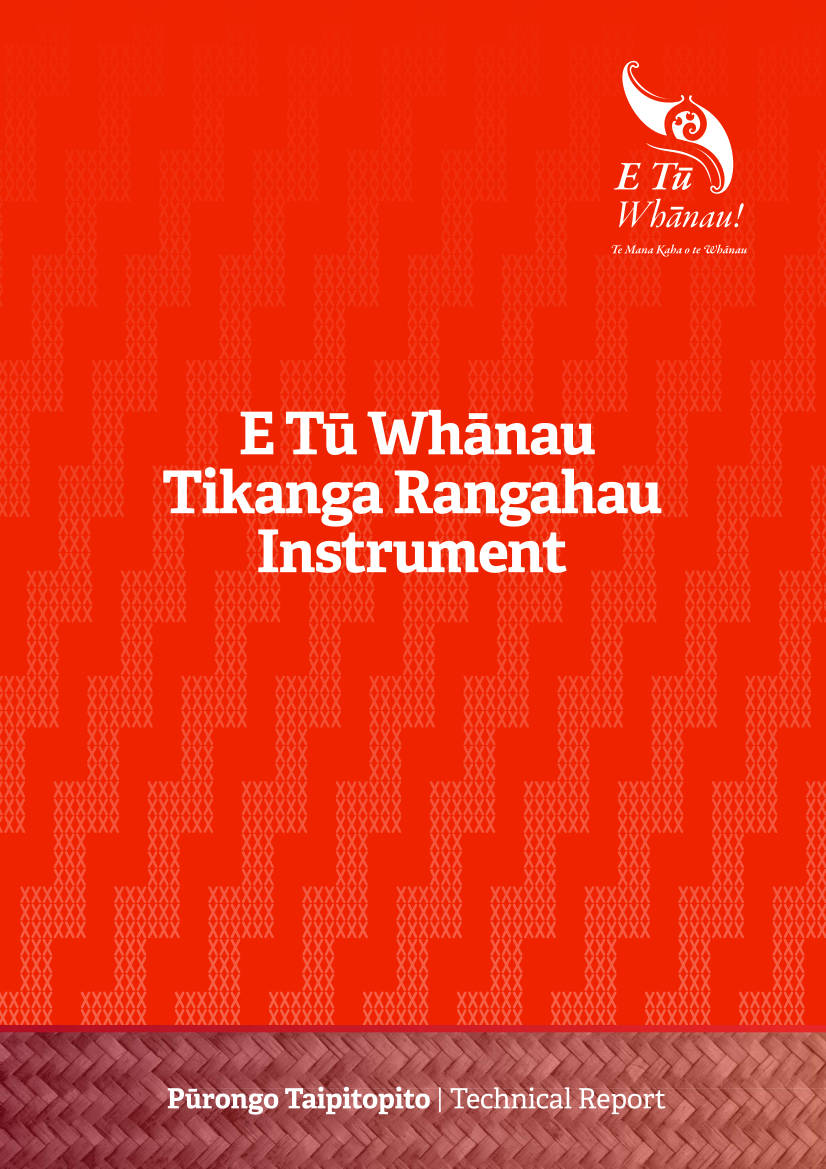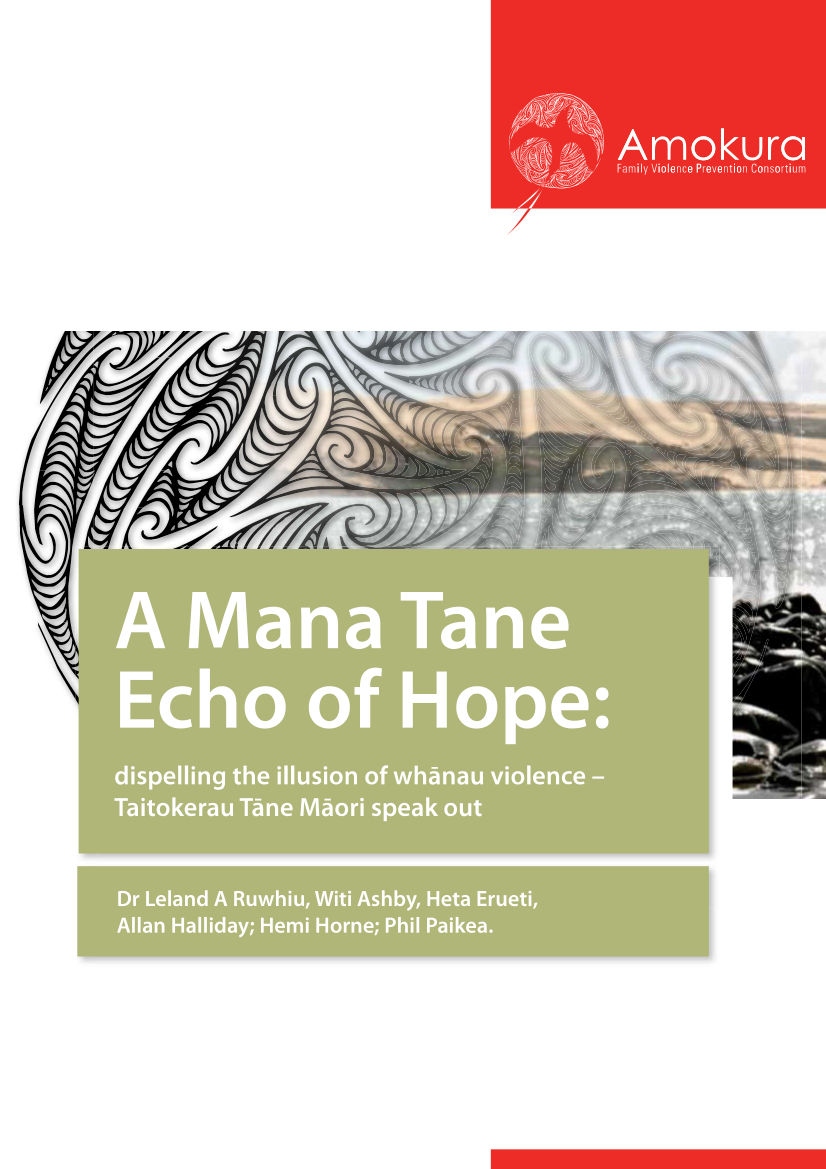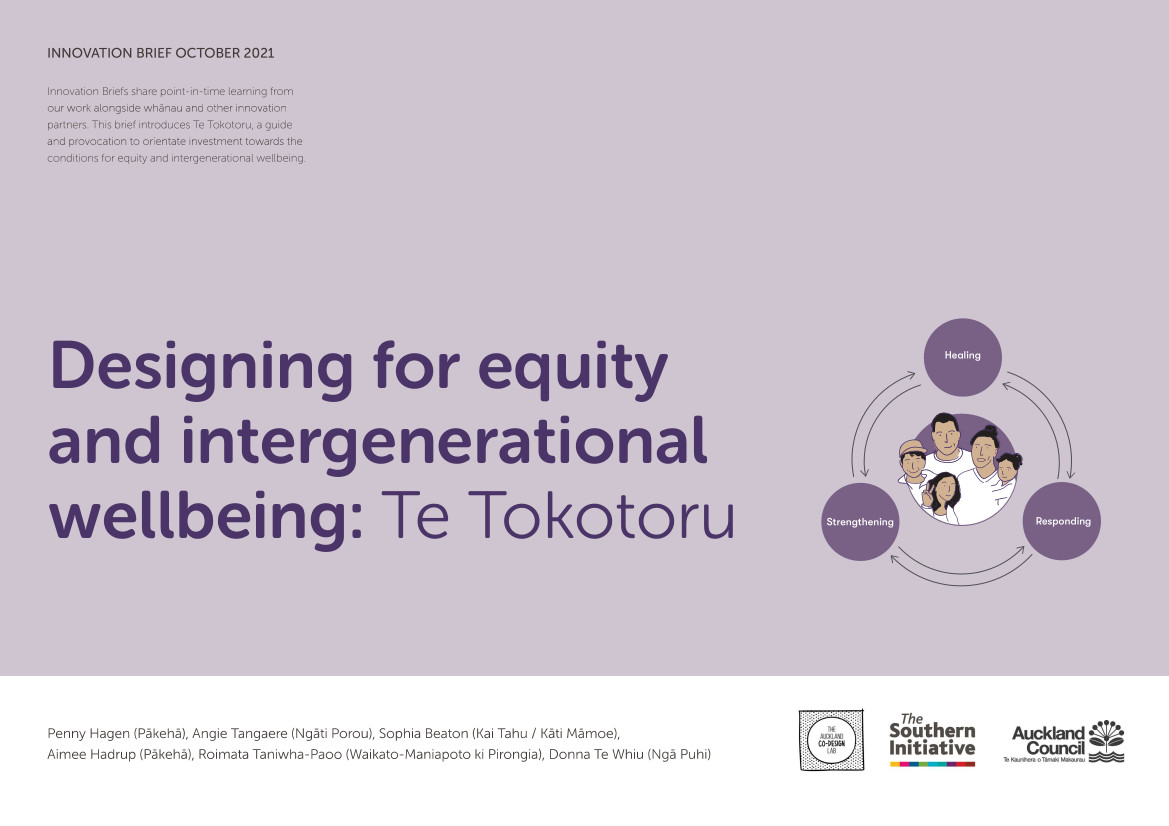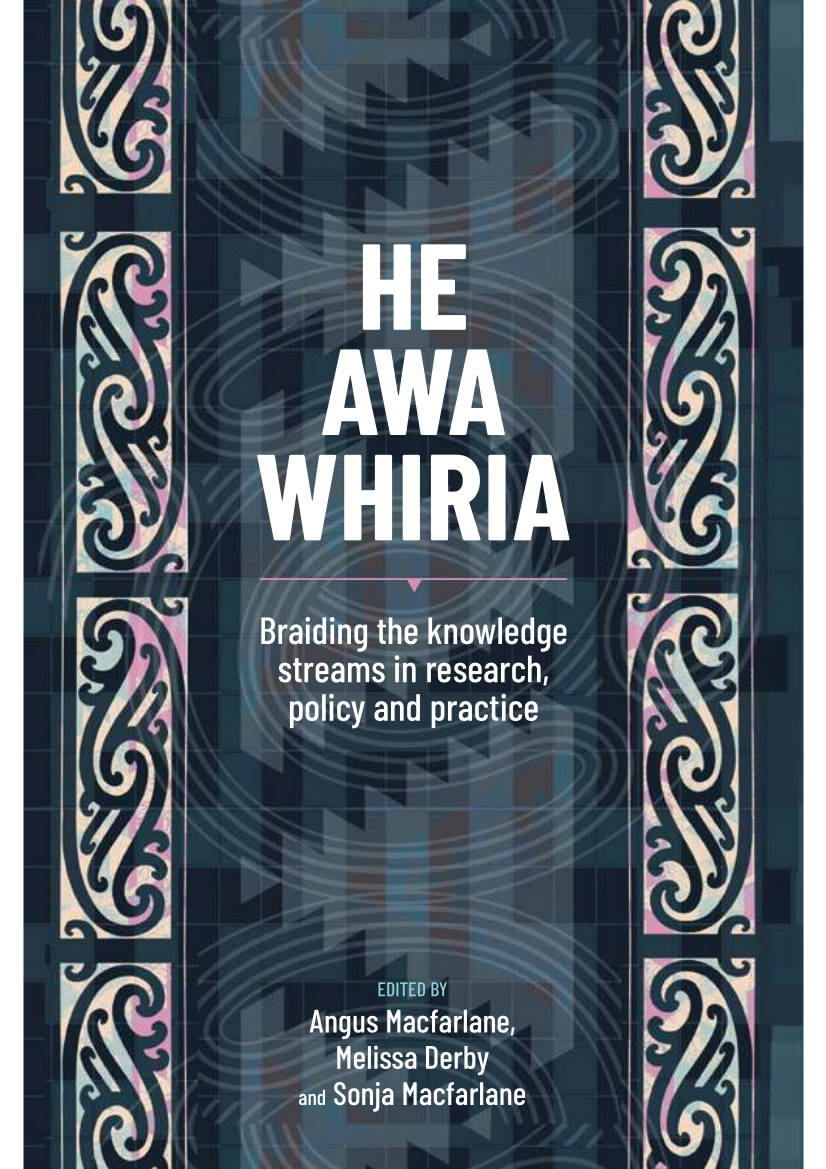He mihi tēnei ki ngā manawa nunui, ki ngā manawa roroa, mō ōu koutou whakakūpapa i te kaupapa nei, mai ngā kaikōrero, kaitautoko, kaimanaaki, kairanghau tae atu ki ngā kaimahi, tēnā koutou katoa.
Ko te wāriu o te tangata ka kitea I ōna mahi, rangatira te mahi, rangatira te kōrero. Nā he rangatira hoki te tangata.
The value of a person is seen in the quality of their work, noble work, noble talk. Thus, a noble person you are.
E Tū Whānau continues to work to better understand and contribute to the evolving body of evidence of what supports positive change in whanāu and communities.
Although not exhaustive, this page pulls together diverse research and publications to increase access to information and to share knowledge related to strengthening and uplifting whānau Māori, as well as communities of former refugees and migrants.
This includes foundational work such as research and publications from the early days of E Tū Whānau and before, as well as more recent research and publications from a range of sources.
We acknowledge the mana and vision of those who laid the path for others to follow.
E Tū Whānau Formative Evaluation (2017)
Completed in 2017, E Tū Whānau Formative Evaluation comprehensively evaluates the kaupapa, highlighting the positive impact E Tū Whānau has on leadership, connection to te ao Māori and community cohesion.
Tikanga Rangahau Community Kete and Technical Report
Tikanga Rangahau Community Kete supports E Tū Whānau communities to undertake a kaupapa Māori-designed research process to understand the impact of E Tū Whānau in their communities. This research process, called E Tū Whānau Tikanga Rangahau, was developed alongside three E Tū Whānau communities.
Tikanga Rangahau Technical Report details the development of the Tikanga Rangahau Community Kete and the findings from the three E Tū Whānau communities where the tool was piloted.
Click on the images below to read or download the Kete and Technical Report.
Family violence prevention
Rapid review of evidence for prevention of violence in ethnic communities
This A3 summary of a rapid review of international and national literature and evidence related to what works for the prevention of family violence and sexual violence in ethnically diverse communities. It also considers how government engages with these communities and identifies limitations and gaps from the evidence.
Click on the image below to enlarge or download the rapid review.
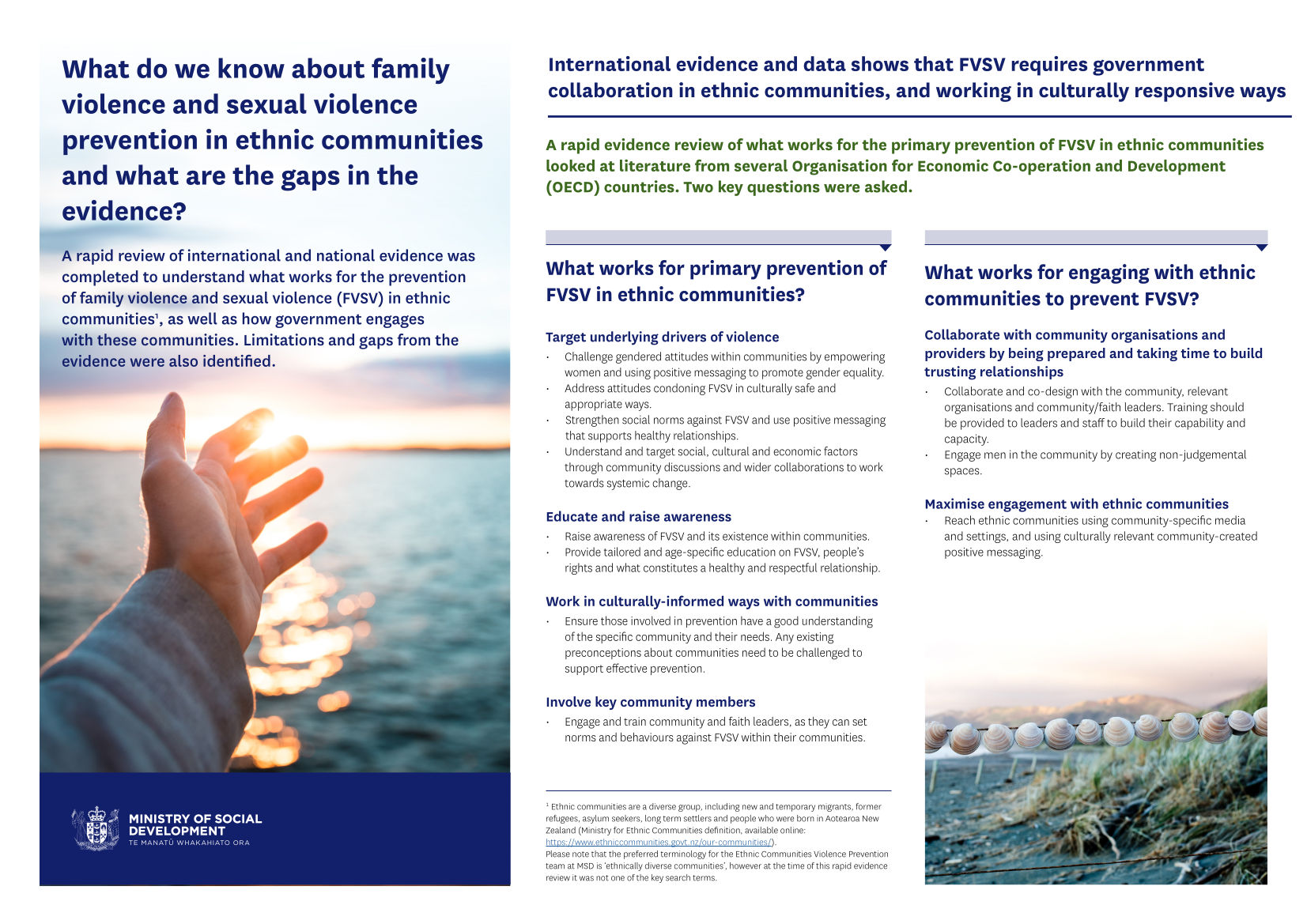
Violence within whānau and mahi tūkino – Litany of Sound Revisited
Violence within whānau and mahi tūkino – Litany of Sound Revisited is a comprehensive literature review that brings together contemporary mātauranga from Māori researchers to explore violence within Māori whānau and mahi tūkino. The review emphasises the historical, intergenerational and systemic factors rooted in colonisation that perpetuate such violence and advocates for Māori-led, culturally grounded solutions focused on prevention, healing and restoring whānau wellbeing.
A mana tane echo of of hope: dispelling the illusion of whānau violence – Taitokerau Tāne Māori speak out.
A mana tane echo of of hope: dispelling the illusion of whānau violence – Taitokerau Tāne Māori speak out explores the transformative journey of tāne māori in Taitokerau as they work to become violence-free, strengthen whānau wellbeing and redefine their roles as safe and aspirational leaders within their whānau and communities.
Click on the image below to enlarge or download A mana tane echo of of hope: dispelling the illusion of whānau violence – Taitokerau Tāne Māori speak out.
Arotake Tūkino Whānau – Literature Review on Family Violence
Produced by Te Puni Kōkiri, Arotake Tūkino Whānau – Literature Review on Family Violence reviews relevant national and international literature on Māori violence.
Te Tokutoru Model
Designing for equity and intergenerational wellbeing: Te Tokutoru Model is a whānau-centred model that provides and alternative starting point for and approach to public sector investment in communities. The model was developed by the Executive Board for the Elimination of Family Violence and Sexual Violence (formerly Te Puna Aonui).
Click on the image below to enlarge or download Designing for equity and intergenerational wellbeing: Te Tokutoru Model.
Mātauranga
He awa whiria: Braiding the knowledge streams in research, policy and practice.
This book details different researchers’ and academics’ rational for adopting a He Awa Whiria approach in their field of expertise, including the development of the E Tū Whānau Community Mobilisation tool. The various authors report on the positive impacts of the approach from the design and application stage of their projects through to the conclusion.
Download He Awa Whiria: Braiding the knowledge streams in research, policy and practice.
He awa whiria, braiding the rivers of kaupapa Māori and Western evidence on community mobilisation
Written by family violence prevention specialist, Dr Cristy Trewartha, He awa whiria, braiding the rivers of kaupapa Māori and Western evidence on community mobilisation explores the blending of Western and Kaupapa Māori research related to addressing family violence, using E Tū Whānau as an example. The paper also looks at what community mobilisation means for E Tū Whānau.
Violence Information Aotearoa
For additional research and information related to ending violence and growing oranga, head over to Violence Information Aotearoa (VINE), New Zealand’s national centre for family violence and sexual violence information.

